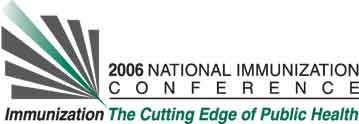Gary S. Marshall, Pediatric Infectious Diseases, University of Louisville School of Medicine, 571 South Floyd Street; Suite 321, Louisville, KY, USA, Laura E. Happe, Applied Health Outcomes, 4114 Woodlands Parkway, Suite 500, Palm Harbor, FL, USA, and Agartha Russell, Maternal and Child Health Section, Georgia Department of Community Health, 2 Peachtree St, NW, 37th Floor, Atlanta, GA, USA.
Learning Objectives for this Presentation:
By the end of this presentation, participants will be able to:
1. Understand the role of coverage rates as a quality indicator
2. Describe childhood immunization coverage rates in this population
3. Discuss the potential impact of a combination vaccine on coverage rates
Background:
Combination vaccines are preferred over their component products because they reduce the number of injections necessary in the routine childhood schedule. Fewer injections could result in fewer deferred shots and better coverage rates, although no empiric data exist to support this.
Objectives:
To assess the impact of a DTaP-HepB-IPV combination vaccine (Pediarix) on coverage rates in a Medicaid population.
Methods:
Infants born between January and March, 2003, were identified from Medicaid administrative claims of the Georgia Department of Community Health. Only children continuously enrolled for ≥ 24 months following birth were studied. Children receiving ≥ 1 dose of the combination were assigned to the "combination" cohort. Children receiving ≥ 1 dose of a component vaccine, not receiving a combination vaccine dose, and matched by gender and birth date to a combination vaccine recipient, were assigned to the "component" cohort.
Results:
Of 1,894 children identified, 59.5% were covered at 24 months of age for 4 DTaP, 83.3% for 3 DTaP, 70.9% for 3 polio, 86.0% for varicella, and 90.3% for MMR. The combination cohort had significantly higher coverage rates than the component cohort for 3 DTaP (86.1% vs 80.6%; p<0.01); 3 polio (76.0% vs 65.9%; p<0.0001); MMR (97.1% vs 83.4%; p<0.05); and varicella (87.3% vs 84.6%; p=0.05). This was seen despite the fact that 65.7% of the combination cohort had received only one dose of the DTaP-HepB-IPV vaccine.
Conclusions:
Use of DTaP-HepB-IPV was significantly associated with improved coverage rates, including vaccines not contained in the product itself. Greater effects might be seen with increasing use of combination vaccines.
See more of Posters
See more of The 40th National Immunization Conference (NIC)

